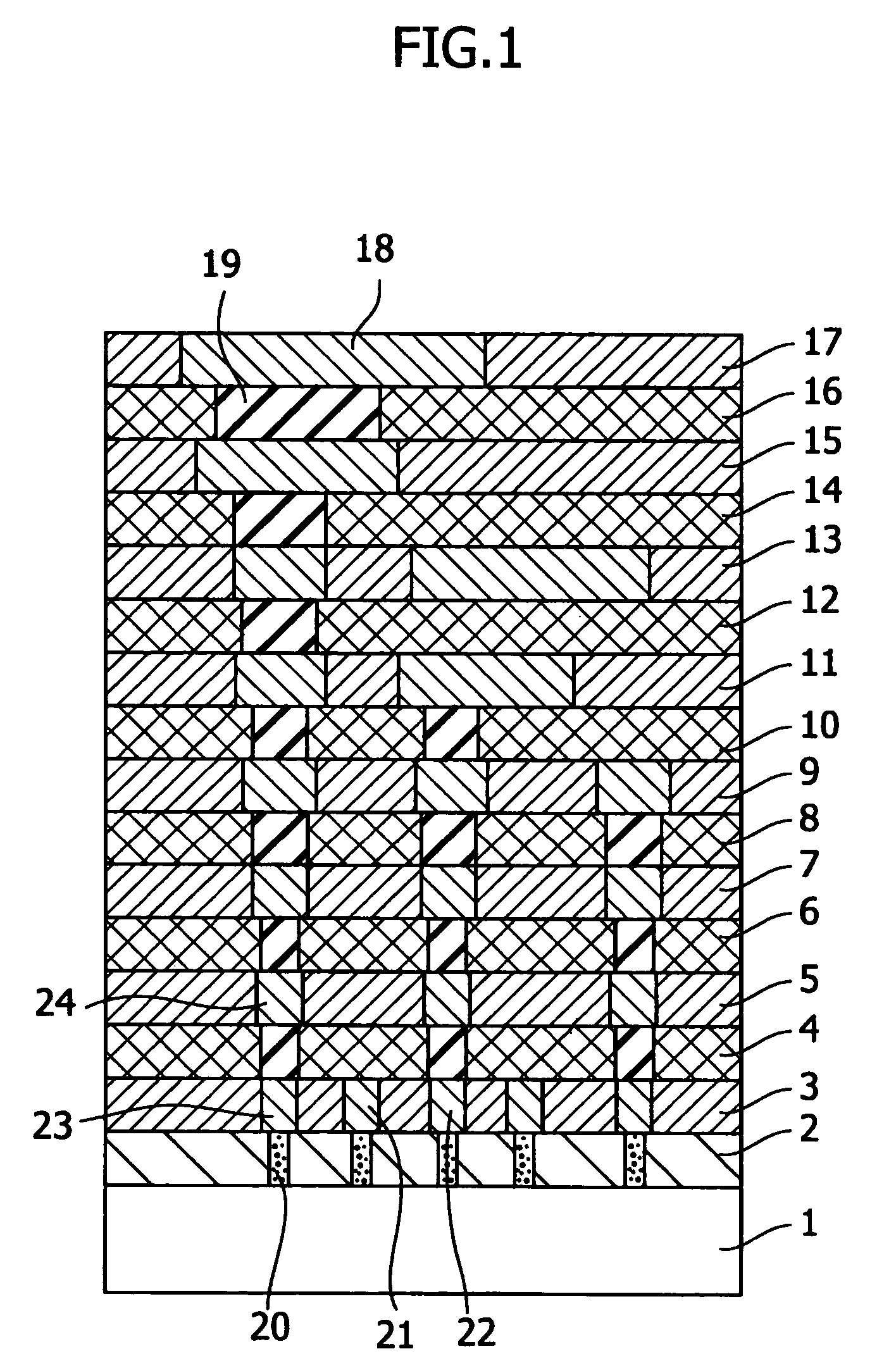Composition for forming porous film, porous film and method for forming the same, interlevel insulator film, and semiconductor device
a technology of porous film and insulator film, which is applied in the direction of thermoelectric devices, semiconductor/solid-state device details, transportation and packaging, etc., can solve the problems of increasing the delay time of interconnection, hindering the enhancement of the performance of semiconductor circuits, and increasing the cost of siloxane polymer synthesis, etc., to achieve low dielectric constant, high film consistency, and mechanical strength sufficient
- Summary
- Abstract
- Description
- Claims
- Application Information
AI Technical Summary
Benefits of technology
Problems solved by technology
Method used
Image
Examples
preparation example 1
[0074]A mixture of 14.6 g of tetraethoxysilane and 25.4 g of 1 mol / L of aqueous solution of tetrapropylammonium hydroxide was stirred for 3 days at room temperature. Then, the reaction mixture was stirred for 3 days at 80° C. to obtain a zeolite sol having an average particle diameter of 75 nm.
[0075]Next, 8 g of aqueous solution of 28 wt % ammonia, 512 g of ultra pure water, 960 g of ethanol, and the aforementioned zeolite sol were mixed at room temperature. Then, 32 g of tetraethoxy silane and 24 g of methyl trimethoxy silane were added to the mixture and stirred for 4 hours at 65° C. Then, 320 g of propylene glycol monopropyl ether was added to the obtained reaction solution and concentrated until the weight of the solution reached 320 g to obtain a composition solution for coating.
Determination of the Zeolite Structure
[0076]After having been powdered by vacuum drying, the zeolite sol was studied by using an X-ray diffraction device: M18XHF-SRA (from MAC Science co., Ltd.).
Measure...
preparation example 2
[0078]Another composition solution for coating was prepared in the same manner as in Preparation Example 1 except that 32.4 g of 1 mol / L of aqueous solution of tetrabutylammonium hydroxide was used instead of 25.4 g of 1 mol / L of aqueous solution of tetrapropylammonium hydroxide.
preparation example 3
[0079]Another composition solution for coating was prepared in the same manner as in Preparation Example 1 except that 32 g of tetramethoxysilane was used instead of 32 g of tetraethoxysilane.
PUM
| Property | Measurement | Unit |
|---|---|---|
| Particle size | aaaaa | aaaaa |
| Particle size | aaaaa | aaaaa |
| Particle diameter | aaaaa | aaaaa |
Abstract
Description
Claims
Application Information
 Login to view more
Login to view more - R&D Engineer
- R&D Manager
- IP Professional
- Industry Leading Data Capabilities
- Powerful AI technology
- Patent DNA Extraction
Browse by: Latest US Patents, China's latest patents, Technical Efficacy Thesaurus, Application Domain, Technology Topic.
© 2024 PatSnap. All rights reserved.Legal|Privacy policy|Modern Slavery Act Transparency Statement|Sitemap

